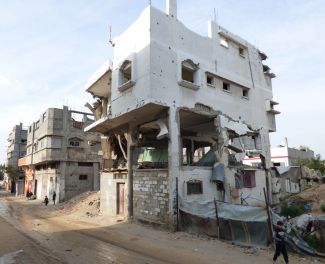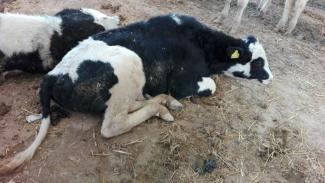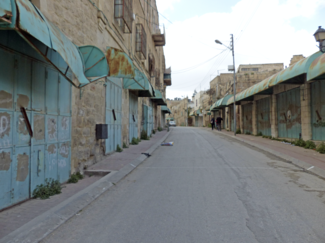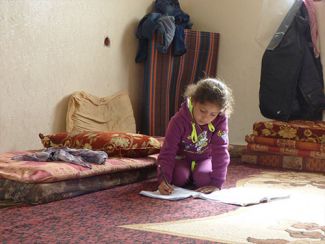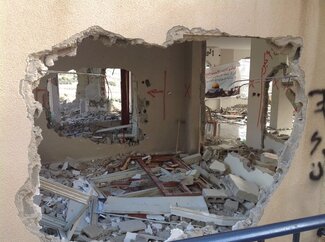Despite significant progress in reconstruction, 7,700 Palestinian families, or about 40,000 people whose homes were destroyed or severely damaged during the 2014 hostilities, were still displaced in February 2017, down from over 16,000 families at the start of 2015. The greatest concern is for approximately 4,000 of these families who have not been allocated any funding for reconstruction and see no end in sight to their displacement.
The Monthly Humanitarian Bulletin | March 2017
Approximately 4,000 displaced families in the Gaza Strip have not been allocated any funding for the reconstruction of their homes. Severe access restrictions place some 2,000 Palestinians in the settlement area of Hebron city at risk of forcible transfer. New measures aimed at revoking the residency rights of family members of perpetrators of attacks in East Jerusalem raise concerns over collective punishment. Outbreak of Foot and Mouth Disease, which affected over 100 livestock farms in the Gaza Strip, has been largely controlled.
In this document
On 26 January 2017, the Palestinian Ministry of Agriculture (MoA) in the Gaza Strip reported its first official outbreak of Foot and Mouth Disease (FMD) on cattle farms in North Gaza and Rafah. Early epidemiological evidence suggests that FMD may have been carried into the Gaza Strip by animals smuggled from Egypt. By 8 March 2017, FMD had affected 105 farms in Gaza: more than 3,000 cattle (a third of the total population), in addition to nearly 3,000 small ruminants (mostly sheep), slightly less than five per cent of the total.
In January 1997, Israel and the Palestinian Liberation Organization (PLO) signed the Protocol Concerning the Redeployment in Hebron. In the agreement, Israel handed over control of 80 per cent of Hebron city (18 km² known as H1) to the Palestinian Authority, while keeping full control over the remaining 20 per cent (known as H2). H2 includes four Israeli settlement compounds, home to a few hundred Israeli settlers and a population of over 40,000 Palestinians.
Following the killing of a Hamas member in Gaza City on 24 March by unknown assailants, the Palestinian de facto authorities in Gaza imposed new access restrictions. Exits through the ‘Arba-‘Arba checkpoint - which controls access to the Erez Crossing between Gaza and Israel – were particularly affected, further reducing the already small number of Palestinians in Gaza permitted to leave through Erez due to pre-existing Israeli-imposed restrictions. Until 6 April, 102 patients who had been referred for medical treatment outside Gaza missed their appointments and operations and will have to reschedule. These restrictions occurred before the upcoming Israeli national and religious holidays when the opening hours of the Israeli-controlled passenger and goods crossings are normally reduced. On 6 April, the Ministry of Interior in Gaza announced that the restrictions imposed on the exit of people from Gaza had been removed.
Following a rise in Palestinian attacks since October 2015, and citing the need for deterrence and prevention, the Israeli authorities have implemented measures that penalize Palestinians for acts that they did not commit and for which they are not criminally responsible. These measures include the destruction of the family homes of Palestinians who carried out an attack or are suspected of carrying out or planning attacks, and the closure of localities where some of these suspects lived. These practices raise concerns about collective punishment, which is prohibited under Article 33 of the Fourth Geneva Convention.
